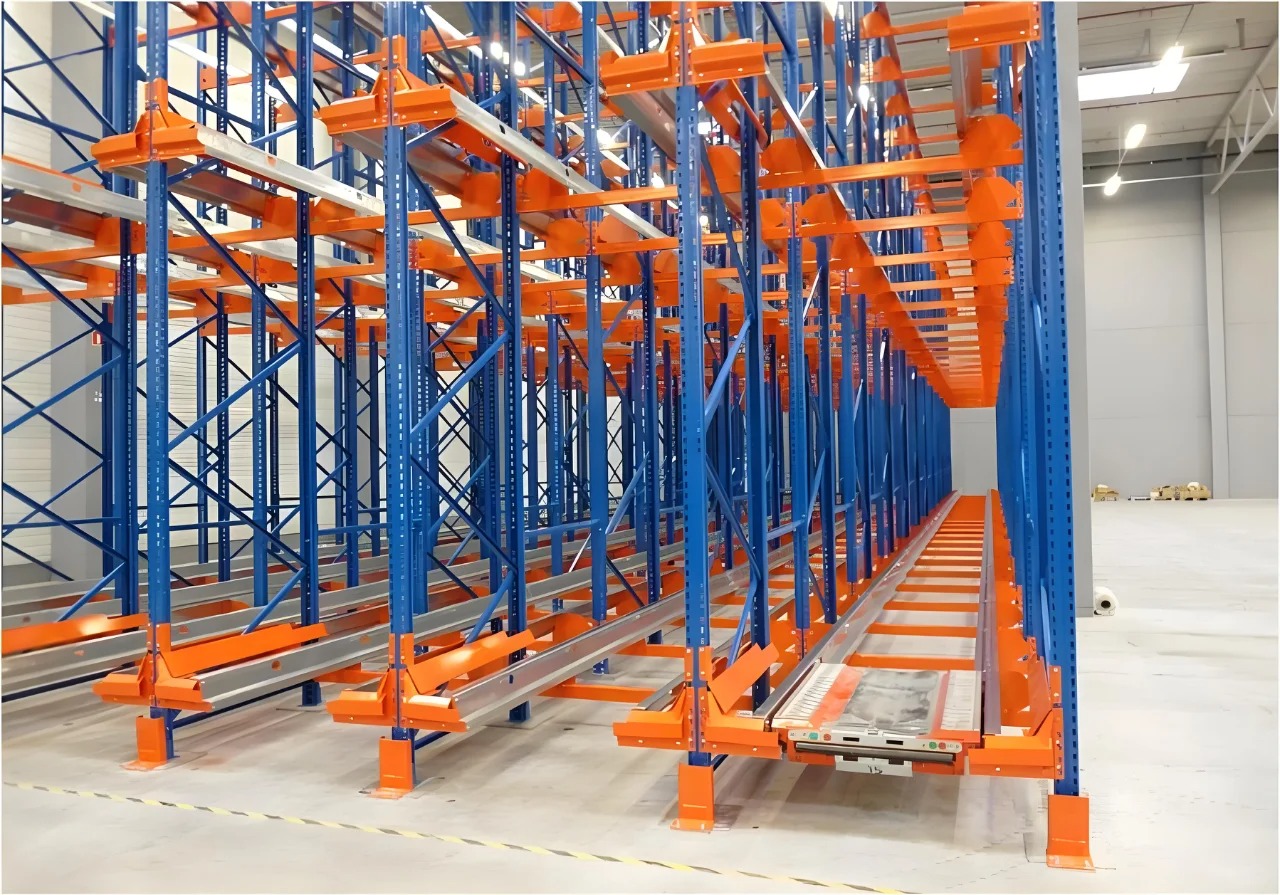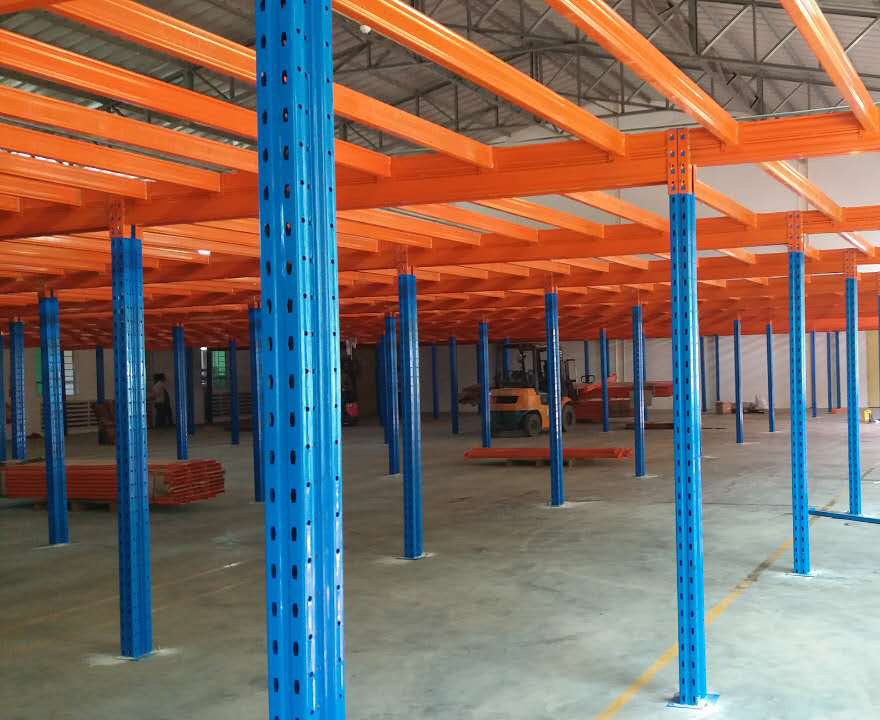In the relentless pursuit of supply chain optimization, the physical infrastructure holding your inventory isn't just shelving; it's the critical foundation determining your warehouse's capacity, efficiency, safety, and ultimately, profitability. Racking and storage systems are far more than passive structures. They are dynamic, engineered solutions designed to maximize space utilization, streamline workflows, protect valuable stock, and adapt to evolving business needs. Choosing and implementing the right racking and storage strategy is paramount for any operation, from bustling e-commerce fulfillment centers to specialized manufacturing warehouses. This article delves into the multifaceted world of racking and storage, exploring its core functions, diverse solutions, and critical considerations.

1. Maximizing Cubic Space: The Vertical Dimension
The most fundamental role of any racking and storage system is to overcome the limitations of floor space by leveraging the often-underutilized vertical cube of a warehouse. Without effective vertical storage, operations are confined to ground-level stacking, severely restricting capacity and leading to sprawling, inefficient layouts.
High-Rise Solutions: Systems like Pallet Racking (Selective, Drive-In, Push-Back) and Cantilever Racking are engineered to safely store palletized or long goods high into the air, significantly multiplying storage density compared to floor stacking. Modern narrow-aisle (VNA) racking and storage configurations, combined with specialized forklifts, allow for extremely tall systems, maximizing the building's clear height.
Density Optimizers: While selective racking offers direct access, solutions like Drive-In/Drive-Thru Racking and Push-Back Racking prioritize density for high-volume SKUs with lower selectivity. Mobile Pallet Racking (movable aisles) is another powerful density tool, eliminating fixed aisles to store more within the same footprint.
Small Parts & Carton Flow: For smaller items, Shelving (boltless, welded, structural) and Carton Flow Racks use vertical space efficiently, bringing products forward via gravity. Mezzanines create entirely new storage levels above the main floor, effectively doubling or tripling usable space in specific zones.
Effective vertical racking and storage transforms a warehouse from a two-dimensional plane into a three-dimensional inventory powerhouse.
2. Enabling Operational Efficiency and Accessibility
Racking and storage systems are not isolated structures; they are integral components of the warehouse workflow. Their design directly impacts how quickly and accurately workers can put away, pick, and replenish inventory. The right system minimizes travel time, reduces handling, and speeds up order fulfillment.
Selectivity vs. Density Balance: Selective pallet racking offers the fastest access to every pallet location, crucial for fast-moving SKUs or operations requiring high order pick rates. Conversely, high-density systems like Push-Back or Pallet Flow Racking (gravity-fed FIFO lanes) sacrifice some selectivity for greater storage volume, ideal for bulk storage or homogeneous product runs.
Picking Optimization: Carton Flow Racks, Bin Shelving, and Pick Modules are designed specifically for efficient order picking. They position items ergonomically, utilize gravity for replenishment, and can be integrated with pick-to-light or put-to-light systems. The layout of racking and storage aisles directly influences picker travel paths – a well-designed layout minimizes congestion and distance.
Throughput Speed: Systems like Pallet Flow Racking ensure First-In-First-Out (FIFO) inventory rotation automatically, speeding up the movement of time-sensitive goods. The compatibility of the racking and storage system with Material Handling Equipment (MHE) like forklifts, order pickers, and automated guided vehicles (AGVs) is critical for smooth, high-velocity operations.
The synergy between racking and storage layout, technology, and processes defines the operational tempo of the warehouse.

3. Ensuring Product Safety and Inventory Integrity
Protecting inventory from damage is a non-negotiable aspect of warehouse management. Poorly designed or maintained racking and storage is a leading cause of product loss due to collapses, impacts, crushing, or environmental exposure. The system acts as the primary defense for your investment in stock.
Structural Integrity & Load Distribution: Engineered racking and storage systems are designed with precise load capacities for beams, frames, and decking. Properly distributing weight according to these specifications is crucial to prevent catastrophic failures. Beam locks and column protectors add essential safety.
Damage Prevention: Features like wire mesh decking prevent small items from falling, while particle board or steel decking provides a stable base for pallets. Cantilever arms with protective sleeves safeguard long goods. Properly dimensioned bays prevent pallet overhang and reduce the risk of forklift impacts.
Environmental Protection: For sensitive goods, racking and storage can be integrated with environmental controls. Selective racking allows for better air circulation compared to dense block stacking, while specialized systems can be designed within climate-controlled chambers or clean rooms. Decking can also help shield items from dust or minor spills below.
Robust racking and storage directly safeguards inventory value and reduces costly shrinkage.
4. Prioritizing Workplace Safety
Warehouses inherently involve risks, particularly when MHE interacts with racking and storage structures. A poorly designed, overloaded, or damaged system poses significant hazards to personnel. Safety is not an add-on; it must be engineered into the racking and storage solution from the outset.
Collision Protection: Racking and storage systems must incorporate substantial column guards, upright protectors, and end-of-aisle barriers to absorb the impact of inevitable minor forklift collisions, protecting both the structure's integrity and the MHE operator. Aisle Width: Sufficient aisle width for the specific MHE type is critical to prevent collisions with racking and other equipment.
Fall Prevention: Wire mesh decking on lower levels prevents objects from falling onto personnel below. For higher levels accessed by order pickers, fall protection anchor points integrated into the racking and storage structure are essential for worker safety.
Structural Awareness: Clear load capacity signage, regular rack inspections (SEMA guidelines), and immediate repair of any damage (bent uprights, damaged beams, missing beam locks) are fundamental safety practices directly tied to the racking and storage infrastructure. Training on safe loading/unloading procedures is paramount.
Investing in safety-compliant racking and storage and rigorous protocols protects your most valuable asset: your workforce.
5. Providing Adaptability and Scalability
Business needs evolve – product lines change, volumes fluctuate, and operational strategies shift. Static, inflexible racking and storage becomes a costly constraint. Modern systems offer remarkable adaptability to accommodate growth and change without requiring complete overhauls.
Modular Design: Most racking and storage systems, particularly selective pallet racking and shelving, are inherently modular. Beam heights can be easily adjusted to accommodate different product sizes. Additional bays can often be added to extend runs, and sections can potentially be reconfigured or relocated as needs change.
System Compatibility: Choosing systems that can work together (e.g., standard pallet racking interfacing with carton flow modules or mezzanines) provides flexibility. Mobile racking and storage offers dynamic reconfiguration by simply moving entire aisles.
Technology Integration: Modern racking and storage is designed with technology in mind. It readily accommodates Warehouse Management System (WMS) location labeling, barcode/RFID scanning points, pick-to-light/put-to-light systems, and even the pathways required for automated storage and retrieval systems (AS/RS) or AGVs. The ability to integrate seamlessly with automation future-proofs the investment.
Scalable and adaptable racking and storage ensures the warehouse infrastructure supports, rather than hinders, business growth and transformation.
Viewing racking and storage merely as a cost center for holding goods is a significant strategic oversight. It is a core operational asset with profound implications across the entire warehouse ecosystem. The right racking and storage solution, meticulously planned, engineered, installed, and maintained, delivers tangible returns:
Increased Capacity & Reduced Real Estate Costs: By maximizing cube utilization.
Enhanced Productivity & Lower Labor Costs: Through optimized workflows and faster picking.
Reduced Product Damage & Shrinkage: Protecting inventory value.
Improved Workplace Safety: Protecting personnel and minimizing costly incidents.
Greater Flexibility & Future-Proofing: Allowing the business to adapt and scale efficiently.
Investing in professional assessment, design, and quality implementation of racking and storage is not an expense; it's a fundamental investment in the efficiency, safety, resilience, and competitiveness of your entire supply chain operation. It truly forms the backbone upon which successful warehousing is built.







